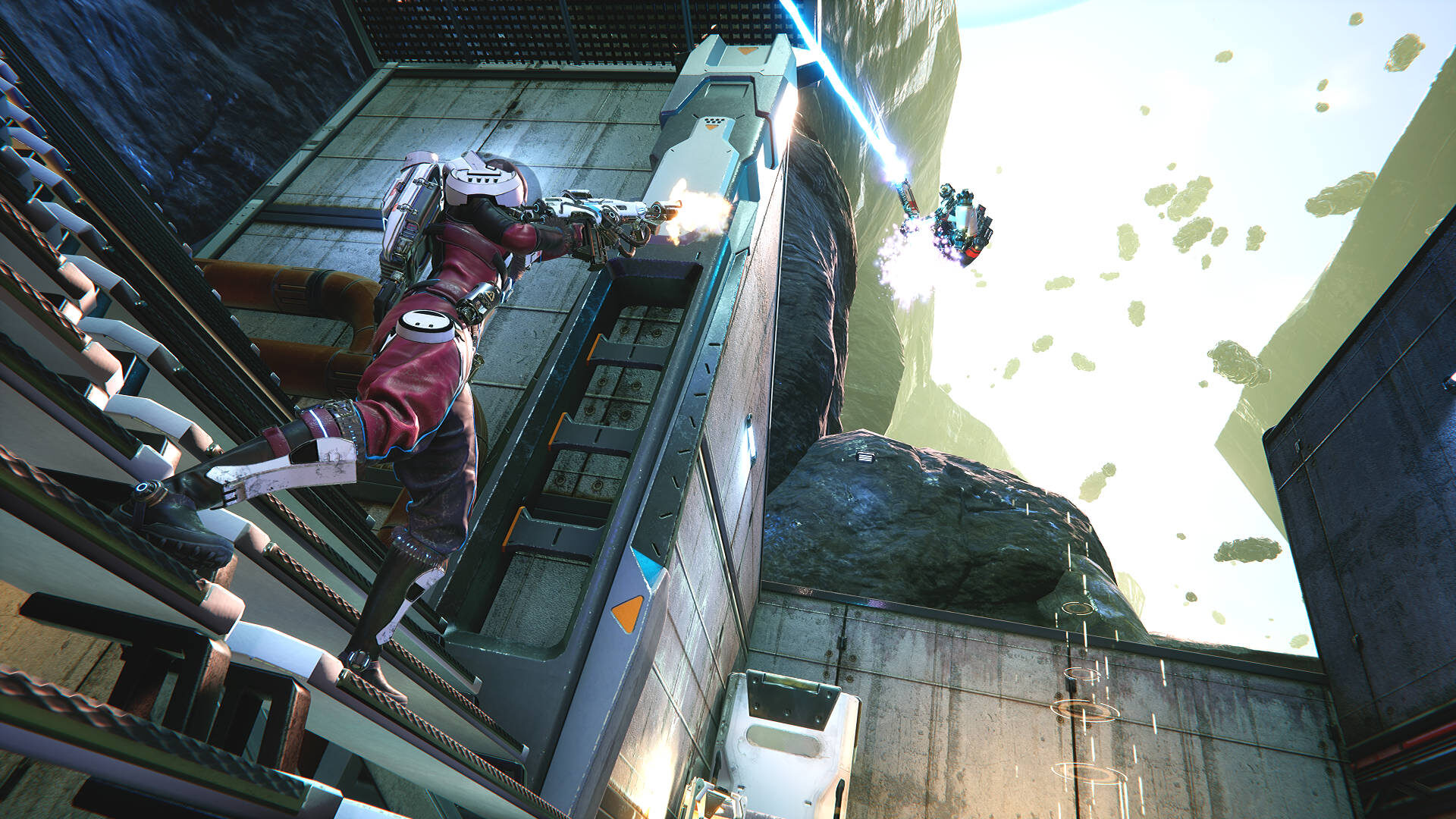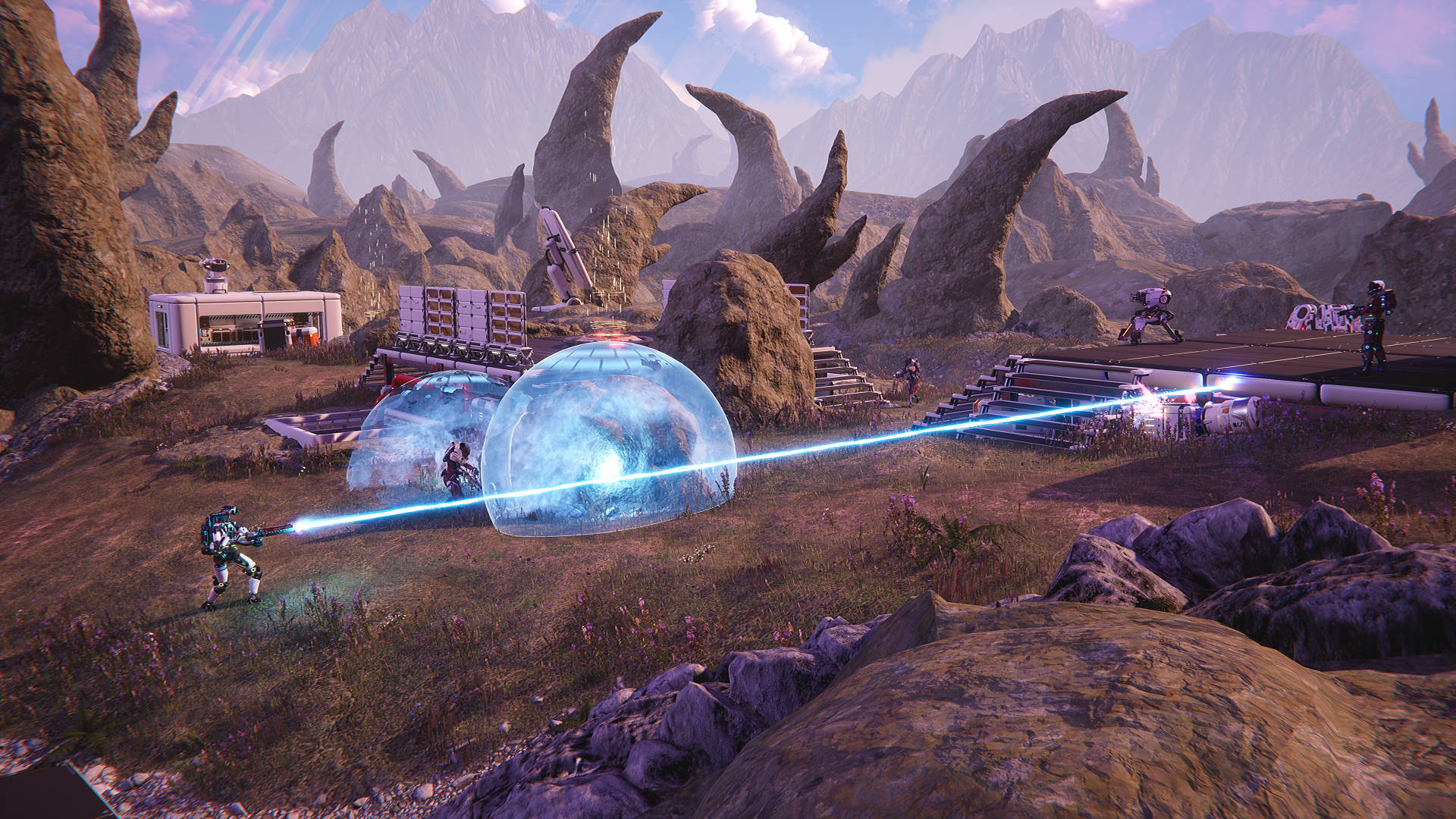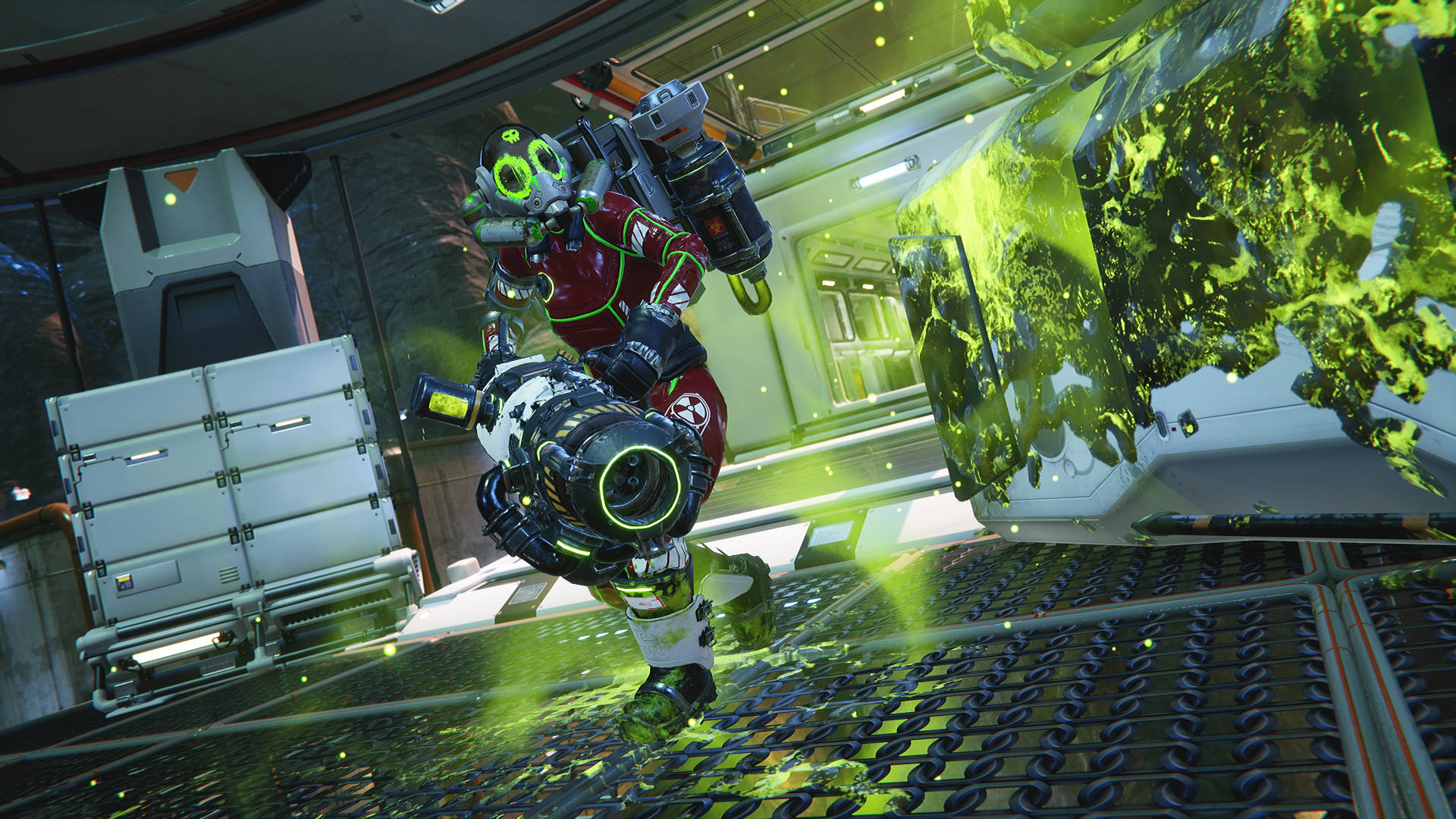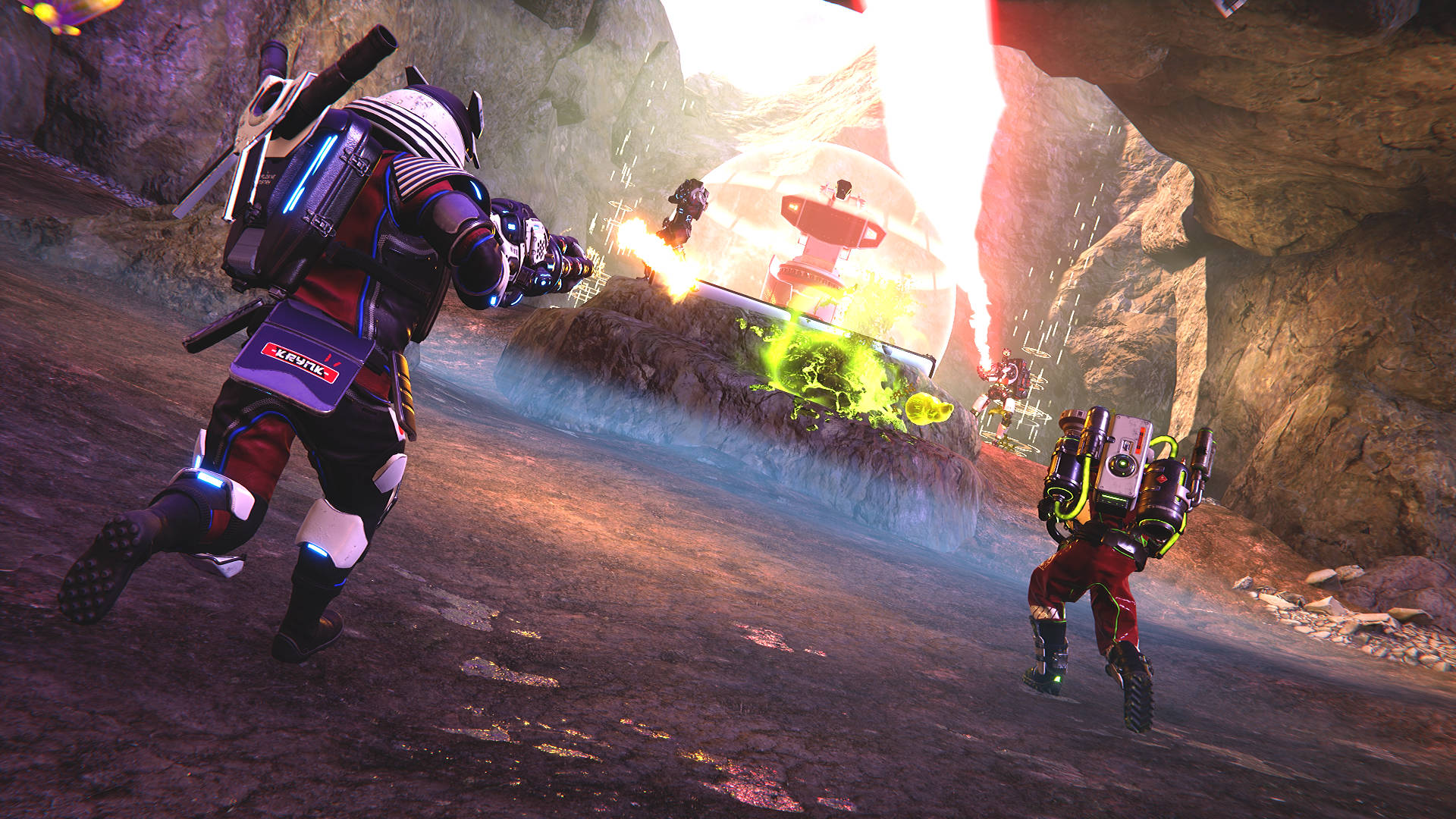Lemnis Gate Promises a Unique 4D Twist on Shooters—if Players Will Give It the Time
When I took part in Frontier Developments’ special showcase in August of last year, one game stood out above everything else I got to see that day: Lemnis Gate.
In development for consoles and PC by Ratloop Games Canada, one press announcement describes Lemnis Gate as “[suffusing] the cerebral intricacies of chess into a heart-pounding, 4D first-person shooter.” In layman’s terms, it’s an FPS based around time. Lemnis Gate asks a simple yet complex question: What would happen if you took one singular match of a competitive shooter, and then constructed that match character-by-character in a turn-based fashion?
I know that’s still potentially a hard concept to wrap one’s brain around, so here are the basics of how it works. Let’s start with the idea of a first-person shooter where two teams of five players are facing off to accomplish some sort of objective. Then, let’s change it so that we only have two human players, Red and Blue, each controlling their entire team of five characters. Now, for the moment, let’s strip things away so that each team only has one character. If we let one of those two players go first—let’s say Red—what would they do with their one chance at completing the objective? Then, we let Blue go second, but restart the match so that they’re beginning at the same point in gameplay that Red did, able to see and interfere with every action Red took with their character in real time. What would Blue do to try to stop Red from winning?
That’s how matches kick off in Lemnis Gate, and from there, they build into contests of actions and reactions. On that initial turn of a match, the first player can pick from one of seven hero-type characters, each complete with their own unique sets of weapons and abilities. That player then gets 25 seconds to do what they can to complete the objective, which might be trying to collect more of a certain resource than their opponent, or trying to destroy (or defend) key objects on the battlefield. A second loop of those 25 seconds then begins, as the other player picks their own character and then tries to decide what to do. Should they attempt to negate the first player’s initial turn, set up offense or defense for future turns to come, or take another route? Once finished, the loop resets yet again, the first player gets to add a second character (from their remaining roster) to the match. Repeat until each player has introduced five characters of their own onto the battlefield, one at a time, until a full 5-vs-5 match emerges.
I know it might still be a complicated concept to fully grasp, so imagine how I felt when I got the chance to go hands-on with Lemnis Gate recently. After a quick tutorial of basic gameplay and an introduction to the seven characters, I moved on to a practice match against a CPU opponent. In those early moments, it was easy to just be totally lost on what to do, because the game is unlike almost any other first-person shooter I’ve ever personally tried. The CPU went first, and it set to work trying to capture the three territory markers that were on the map. When it came to my first turn, it was easy to have a plan: Do what I need to do to either kill, or at least hamper, my opponent’s characters.
The problem that I had in those early moments of Lemnis Gate—and I think one of the big hurdles a lot of players are going to have—is that it’s incredibly easy to fall into a pattern of playing almost totally defensively. While your opponent is taking each of their turns, you’re given a drone to fly around the map, so that you can see exactly how the match is being altered. Every time, I would watch what the CPU was doing, and think about which character and tactic I needed to introduce next to counter my opponent. Of course, that’s definitely part of the game, but I found myself being too reactive and nowhere near proactive enough. Instead of working toward setting up better situations for myself (and worse for my opponent) in the future, I was always responding to the past. One of the downfalls of doing that is, if you screw something up, miss a shot, or make some other type of misstep, that entire turn could end up being worthless.
I wasn’t feeling incredibly confident when we moved on from the tutorial into playing proper games against other human opponents. During our preview session, we were able to select between three gameplay types: 1v1 Turn Based, 2v2 Turn Based, and 2v2 Teammates Play Together. For our first match, we did 1v1 implementing the Retrieve XM mission type, where each player tries to collect and return more resources to their spawn point than the other player.
Let me tell you: I got creamed. That first match was totally embarrassing for me, because I fell into the exact trap I explained above. Every turn I took, I was only trying to negate my opponent’s previous turn, and with every mistake I made, that gameplan got more and more useless. Honestly, I wasn’t liking Lemnis Gate in that first match, because it all just felt so hopeless and unfair. With the other player going first, of course they were going to have the advantage! The only thing I could ever do was play catch-up to them. How was I supposed to get XM of my own when I had to devote every turn to stopping my opponent from getting their own?
Once that match was over, we played a second on that same map and mission type. I lost yet again—but things were finally starting to click a little. I forced myself to stop always playing defensively, and in doing so, had more chances to make plays while also finding opportunities to shut down those of my opponent. I still wasn’t happy with how I was performing, but I was starting to understand the intricacies of Lemnis Gate slightly more with each round.
By the time we got to our final match of the preview event, my partner and I completely destroyed the other team in a game of 2v2 Teammates Play Together. Now, it’s hard to brag too much about winning at a game that everybody’s still new to, but I was really proud of how far I’d come in my understanding of Lemnis Gate. I also liked that mode much more than the others, as I found it to be by far the most fun of the options available to us during the demo. 2v2 Turn Based works much like the standard 1v1 Turn Based, except that each time your side gets a turn, who gets to play alternates between you and your partner. In 2v2 Teammates Play Together, however, both players on a team head out onto the map together for each turn. It was in that mode specifically where I felt the push to always play defensively really fade away. My partner and I could swap between being more active or reactive, and one particularly good turn could set us up well to really amp up our aggression in trying to win on the next.
Lemnis Gate is an incredibly interesting gaming experience, one that’s unlike any other first-person shooter that I can think of. What began for me as a spark of curiosity born out of a reveal trailer has now grown into a genuine eagerness and excitement for playing more once the game launches on August 3rd. Shooters with gimmicks can always be hit or miss, and I’m not promising that Lemnis Gate will have all of the elements it needs to both find a proper audience while also having staying power. Still, I think the dev team has really come up with something special here, creating an idea that’s got a lot of potential at its core.
Unfortunately, “finding an audience” is where I’m concerned. I’m sure this is a comparison the team at Ratloop Games would hate to see me make, but Lemnis Gate reminds me of Turtle Rock Studios’ ill-fated Evolve. I loved Evolve. It was a project that attempted to bring something new to the shooter genre, focusing on employing different kinds of strategies and teamwork requirements than most players were used to. Of course, all of that resulted in an experience that could be incredibly intimidating to new players, and hard to enjoy past that initial learning curve until you truly understood the ins and outs of the game.
I don’t want to make the argument that Lemnis Gate should be free-to-play, because I hate the idea of just forcing everything into that category, as well as the potential gameplay compromises that can come from such a decision. And, in what I think is an incredibly smart move, Frontier and Ratloop Games have priced Lemnis Gate at $19.99 on all platforms, with it currently even cheaper thanks to a 20-percent discount for pre-orders in the lead up to its release. Still, I just can’t shake the feeling that at least some players are going to get frustrated and give up early into playing (much like Evolve), and even $20 is a lot of money if you hear someone you know and trust giving a negative opinion of the game. If nothing else, this is the perfect kind of release to come to Xbox Game Pass day one.
I hope that Lemnis Gate can fulfill the promise it’s shown so far after going hands-on with it. And, if it does, I also hope that the world will give it the chance it then properly deserves. There’s still a lot I don’t know about the game even after playing it, such as its potential longevity, if the seven included characters will be enough to keep the game feeling fresh, or if people are even going to want such a novel twist on a genre with so many already established options. What I do know is that Ratloop Games Canada is attempting to give us something genuinely unlike other shooters out there, and at the point in my life I’m now at, an attempt to be different goes a long way in my book.



